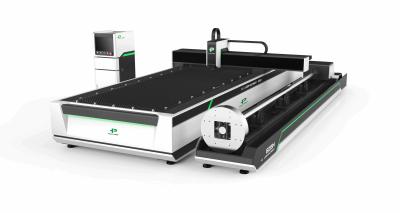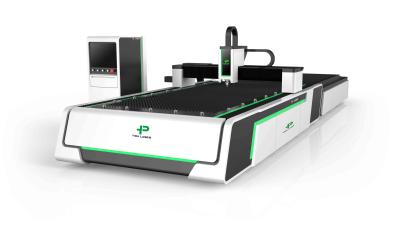What All You Need to Know to Use High-Speed Lasers to Cut Metal
Introduction
Laser reducing is a state-of-the-art approach that is employed for a range of steel manufacturing operations. It's the best answer for producing accurate, constant cuts on severa jobs. Manufacturers often make use of high-speed laser cutters to produce elaborative designs that demand laser-level accuracy.
It's necessary to recognize the distinct kinds of lasers that machines make use of and the metals they can work on to pick out an most suitable steel laser cutter for our projects. Here is a complete information that covers each and every necessary element of the use of a high-speed laser for metallic reducing operations.
The Working Principle Behind Metal Laser Cutting
Laser slicing entails focused on a metallic sheet with a powerful, exactly targeted laser. A gap is made in the cloth by using the machine's laser beam as it passes via it. The laser penetrates the cloth after growing a gap and supplying a specific reduce with a ideal floor finish.
Sometimes, laser cutters hire pulse laser beams that transmit the reduce thru the laser pulses. Otherwise, non-stop waves are used by way of laser cutters, preserving the beam constant on the cloth until the reduce is made. In each situations, laser reducing machines slice via the metallic workpiece and make unique cuts the use of high-speed lasers.
Now, let's talk about the two most distinguished sorts of lasers employed for metallic slicing operations.
Co₂ vs. Fiber Laser Cutting: Which Is Better for Our Metal Cutting Operations?
Let's delve deeper into the professionals and cons of utilising the two sorts of lasers.
1. CO₂ Laser
It is a truth that CO₂ laser is produced via passing an electrical modern-day throughout a glass tube that includes CO₂ and different gases. It implies that even though CO₂ lasers may want to be much less expensive, they would solely be in a position to reduce much less reflective metals and would usually want to use oxygen or nitrogen as help gases.
Also, CO₂ laser slicing gear is delicate. They are surprisingly touchy and sophisticated due to the reflect and glass tube pairing and require particular alignment to work optimally. As a result, protection and servicing fees upward thrust with time. However, their preliminary affordability balances everything.
2. Fiber Laser
In a fiber laser, rare-earth factors such as ytterbium, erbium, & neodymium are brought to an optical fiber to produce the laser. Unlike CO₂ lasers, fiber lasers do not require an help fuel for slicing operations. This approach effects in particularly consistent and easy goal lasers.
Fiber lasers are a greater latest innovation in the area of laser cutting. They are regularly harnessed in industrial settings for skinny steel sheet slicing operations for use in manufacturing parts. Despite the laptop variations of these machines being pretty pricey, they provide severa advantages, like low electrical energy consumption and minimal transferring components.
Undoubtedly, fiber lasers reduce metals extra quickly, precisely, and with lesser strength consumption. Additionally, fiber lasers are less complicated to cope with and require much less ongoing maintenance. Nevertheless, one issue CNC specialists have to reflect onconsideration on is that fiber lasers regularly fee twice as a great deal as CO₂ lasers and cannot be employed for quite a few cloth types.
What Kind of Materials Can Lasers Penetrate?
First, citing the non-metallic and natural materials, with basic CO2 slicing machines, slicing substances like plastics (acrylic) & polymers, rubber, cardboard, leather, and wooden is simple. It is due to the fact positive substances burn rapidly and soak up radiation. Contrarily, steel conducts warmness and has a reflecting property. Thus for a laser to penetrate, a smaller extent have to be uncovered to a increased quantity of light.
A imperative factor to recognize right here is that the residences of special metal substances drastically impact the reducing operations and methods to be employed, alongside with accomplishing precision and a easy floor finish.
Metals like stainless metal and metal can be without difficulty reduce through using powerful, high-speed CO2 lasers. On the contrary, owing to their reflective nature, CO2 slicing operations on aluminum and brass can be challenging. Hence, fiber lasers are regularly used for slicing copper, brass, and aluminum.
Top three Benefits of Employing High-Speed Lasers for Metal Cutting Projects
1. Reduced Lead Time
Laser slicing is famend for its functionality to rapidly and precisely reduce metal. Reducing the time wished to reduce substances can velocity up production. Laser cutters are additionally a superb device for speedy prototyping operations. Also, laser cutters decorate fabrication effectivity considering the fact that severa factors can be configured and reduce simultaneously.
2. High Precision and Accuracy
Laser slicing gear is 2d to none when it comes to steel slicing and fabrication with precision. The cutters can be programmed to make tricky geometric patterns the use of a CNC router or metallic lathe, and lasers precisely generate these cuts and contours inside minutes.
3. Better Electrical Efficiency
While different steel reducing procedures generally want roughly 50kW of electrical energy at some point of a single slicing session, laser cutters commonly require about 10kW. Hence, laser cutters can help producers in accomplishing the goal of much less strength utilization and working greater efficaciously as a cost-cutting and ecologically accountable strategy.
Conclusion
We have touched upon the most quintessential factors skilled manufacturers, and professional computer operators want to understand earlier than using high-speed lasers for metallic reducing projects.
Also, the above-discussed elements make laser cutters appropriate to serve in countless core manufacturing industries, including- OEM, automotive, aerospace, electronics, clinical equipment, etc.
YD LASER Haylie
Whatsapp:+86 13277705603
Email:YD@yd-laser.com




